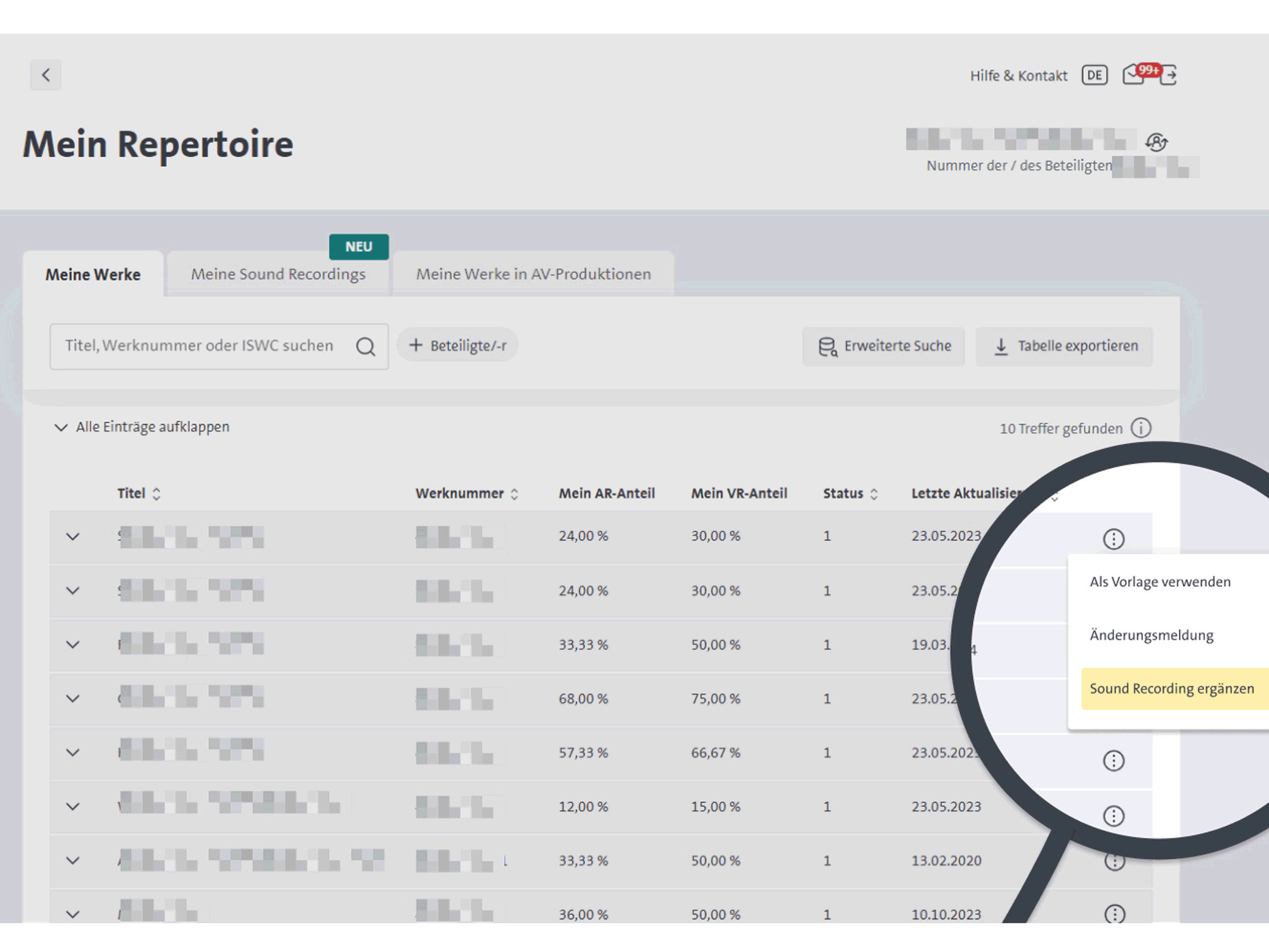
Details of sound recordings
By using the function Amend sound recording, you can add more information on a sound recording of your work. These details will then be saved with the respective work version. This page includes everything you need to know on this topic.
Questions and answers
A sound recording is a carrier holding the audio recording of a work. The details relevant for sound recordings are the performers or artists, and unique identifiers of the recording such as the ISRC (International Standard Recording Code).
The details you provide are saved with the GEMA work version number. We enhance the metadata with this information which means we can better match the usage data. The result is an improved distribution of your royalties.
Which details can I add to a sound recording?
You can provide the following details:
- Various titles of the recording
- Versions
- Performers and artists including their roles
- Date of the first release or publication
- ISRC
- Provider track ID
- MPN ID
You can add as many sound recordings to a work version as you like.
There is a difference when it comes to the mandatory information. In the case of library music, the details on the artists or performers are optional.
If there is no ISRC, it is enough if you alternatively provide the date of the first release/publication.
No, adding the data a second time is not necessary. The migration of the details from the soundfile upload happens promptly at GEMA.
No, it is currently not possible to edit the details. You can, however, enter all details on a sound recording again from scratch.
In the work information of the work version the details on ISRC, recording title (other titles) and performers can be found. It currently takes about 24 hours until you can view the submitted details in the work version.
Anyone submitting data receives a notification in their Online Portal mailbox.
All parties involved in the work (creators and publishers) receive a notification.
The details for sound recordings can be submitted for work versions with status 1 and status 2.
Here you will find the option „Amend sound recording“
